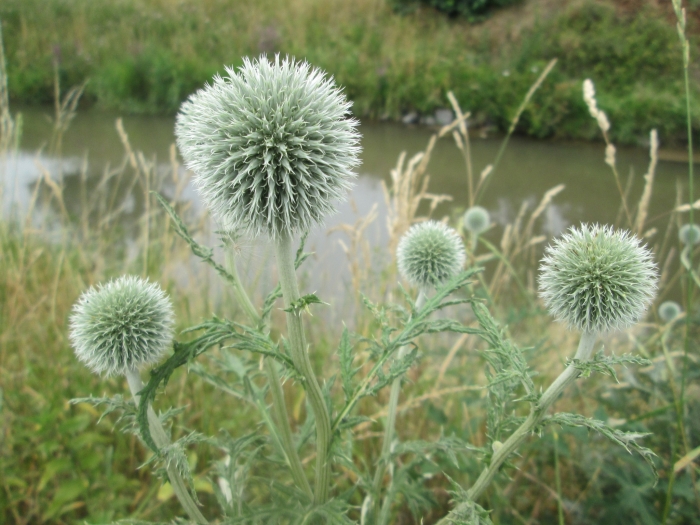Tall Globethistle
(Echinops exaltatus)
Tall Globethistle (Echinops exaltatus)
/
/

Andreas Rockstein
CC BY-SA 4.0








































Estimated Native Range
Summary
Tall Globethistle is valued for its architectural form and unique flower heads, which add texture and interest to garden borders and wildflower meadows. It is also used in dried flower arrangements due to the persistence of its striking globular blooms. In cultivation, it thrives in full sun to part shade and prefers well-drained soils, though it is relatively drought-tolerant once established. While it is not particularly prone to diseases, it can occasionally suffer from root rot in overly wet conditions. Tall Globethistle can self-seed and spread, so gardeners should monitor its growth to prevent unwanted naturalization.CC BY-SA 4.0
Plant Description
- Plant Type: Herb
- Height: 1-5 feet
- Width: 0.2-1 feet
- Growth Rate: Moderate
- Flower Color: Blue, Purple
- Flowering Season: Summer, Fall
- Leaf Retention: Deciduous
Growth Requirements
- Sun: Full Sun, Part Shade
- Water: Medium
- Drainage: Medium
Common Uses
Bee Garden, Bird Garden, Border Plant, Butterfly Garden, Deer Resistant, Drought Tolerant, Low Maintenance, Rabbit Resistant, Salt Tolerant
Natural Habitat
Grasslands and open areas in Southeastern Europe
Other Names
Common Names: Russian Globe-Thistle, Tall Globe-Thistle, Høj Tidselkugle, Hohe Kugeldistel, Drüsenlose Kugeldistel, Boulette De Hongrie, Oursin De Hongrie, Échinope De Russie, Échinops De Hongrie, Stekelige Kogeldistel
Scientific Names: , Echinops exaltatus, Echinops commutatus, Echinops globifer, Echinops mollis, Echinops commutatus f. commutatus, Echinops commutatus f. sectatus, Echinops eglandulosus, Echinops strictus, Sphaerocephalus commutatus
GBIF Accepted Name: Echinops exaltatus Schrad.